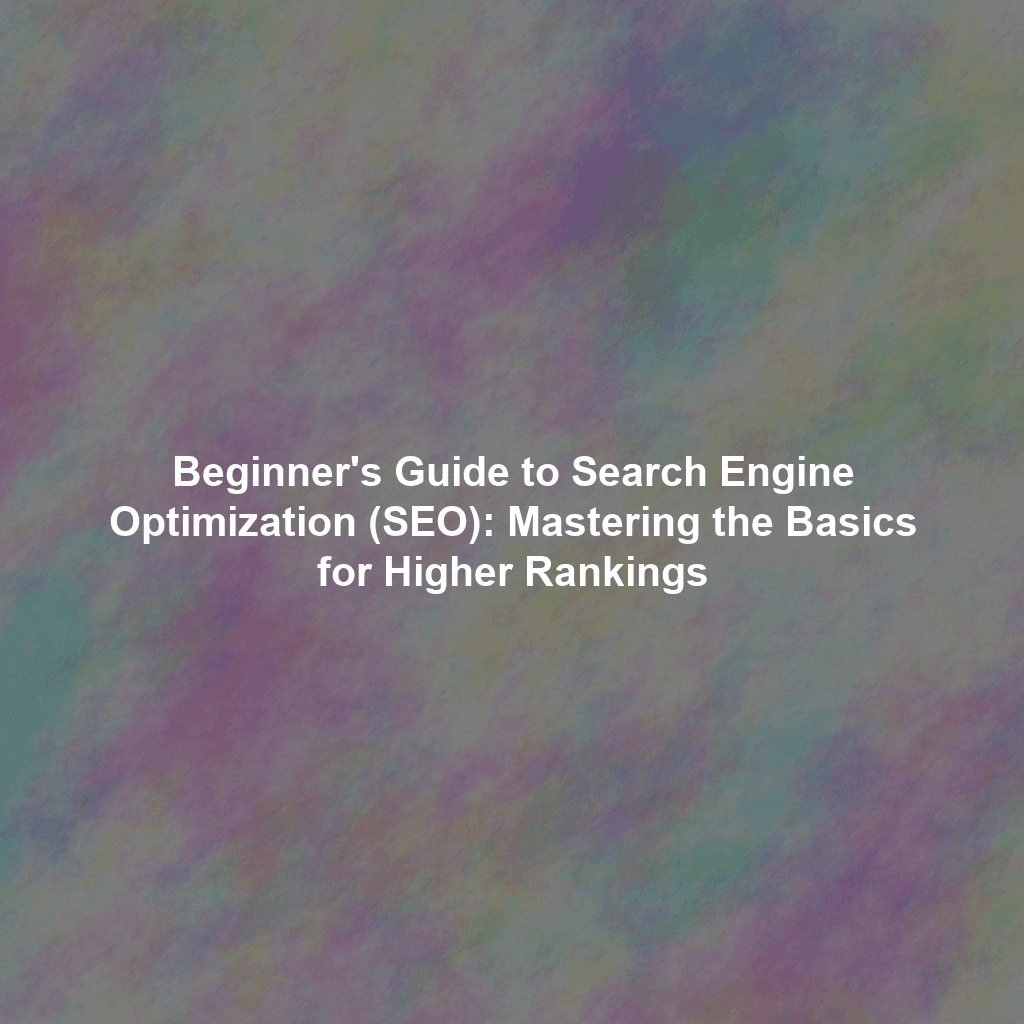In the ever-evolving landscape of digital marketing, Search Engine Optimization (SEO) stands as a cornerstone for driving organic traffic to your website. Think of it as making your website incredibly attractive and easy for search engines like Google to find and recommend to users searching for what you offer. This guide is designed to demystify SEO, providing a simplified introduction to the core concepts and actionable strategies you can implement today to improve your website’s visibility and attract more potential customers.
What is SEO and Why Does It Matter?
SEO is the process of optimizing your website to rank higher in search engine results pages (SERPs). When someone searches for something related to your business, you want your website to appear as close to the top of the results as possible. Why? Because the higher you rank, the more likely people are to click on your link, visit your site, and potentially become customers. SEO is crucial because it allows you to reach a highly targeted audience actively searching for your products or services, often at a lower cost than paid advertising.
Key Pillars of SEO: A Beginner’s Overview
SEO can be broken down into several key areas. We’ll cover the essentials here:
Keyword Research: Finding What Your Audience is Searching For
Keywords are the foundation of any successful SEO strategy. These are the words and phrases that people type into search engines when looking for information, products, or services. Your goal is to identify the keywords most relevant to your business and incorporate them strategically into your website content.
How to do it:
- Brainstorm: Start by listing the terms you think people would use to find your business.
- Use Keyword Research Tools: Tools like Google Keyword Planner, SEMrush, and Ahrefs can help you discover related keywords, their search volume (how often they’re searched), and their competition (how difficult it is to rank for them).
- Analyze Competitors: See what keywords your competitors are targeting.
- Focus on Long-Tail Keywords: These are longer, more specific phrases (e.g., “best Italian restaurant in downtown Chicago”). They often have lower search volume but can attract a more qualified audience.
On-Page Optimization: Making Your Website Search Engine Friendly
On-page optimization refers to optimizing elements within your website to improve its ranking. This includes:
- Title Tags: These are the titles that appear in search results. They should be concise, compelling, and include your primary keyword. Aim for under 60 characters.
- Meta Descriptions: These are brief summaries of your page content that appear under the title in search results. Write engaging descriptions (around 150-160 characters) that entice users to click.
- Header Tags (H1, H2, H3, etc.): Use header tags to structure your content and highlight important topics. Use your primary keyword in the H1 tag and relevant keywords in subsequent header tags.
- Content Quality: Create high-quality, informative, and engaging content that satisfies user intent. Answer their questions thoroughly and provide value.
- Image Optimization: Use descriptive alt text for your images. This helps search engines understand what the image is about and improves accessibility. Also, compress images to reduce file size and improve page speed.
- URL Structure: Create clear and concise URLs that include relevant keywords.
Off-Page Optimization: Building Your Website’s Authority
Off-page optimization refers to activities you do *outside* of your website to improve your rankings. The most important aspect of off-page SEO is link building.
- Link Building: Earning high-quality backlinks (links from other websites to yours) signals to search engines that your website is authoritative and trustworthy. Focus on earning links from reputable and relevant websites.
- Social Media: While social signals aren’t a direct ranking factor, social media can help you build brand awareness, drive traffic to your website, and increase the chances of earning backlinks.
- Online Reputation Management: Monitor and manage your online reputation. Positive reviews and mentions can improve your brand’s credibility.
Technical SEO: Ensuring a Smooth User Experience for Search Engines and Users
Technical SEO focuses on the technical aspects of your website that can affect its ranking. This includes:
- Site Speed: A fast-loading website provides a better user experience and is favored by search engines. Use tools like Google PageSpeed Insights to identify areas for improvement.
- Mobile-Friendliness: With the majority of searches now happening on mobile devices, it’s crucial that your website is responsive and provides a seamless experience on all devices. Use Google’s Mobile-Friendly Test to check your website’s mobile-friendliness.
- Site Architecture: Ensure your website has a clear and logical structure that makes it easy for both users and search engines to navigate.
- XML Sitemap: Submit an XML sitemap to search engines to help them crawl and index your website more efficiently.
- HTTPS: Ensure your website is secured with HTTPS.
Actionable Tips for Improving Your Website’s SEO
- Start with Keyword Research: Identify the keywords you want to target.
- Optimize Your Title Tags and Meta Descriptions: Make them compelling and include your primary keyword.
- Create High-Quality Content: Focus on providing value to your audience.
- Build High-Quality Backlinks: Focus on earning links from reputable websites.
- Improve Your Site Speed: Use a caching plugin, optimize images, and choose a good hosting provider.
- Make Your Website Mobile-Friendly: Use a responsive design.
- Monitor Your Progress: Use Google Analytics and Google Search Console to track your website’s performance.
Conclusion: SEO is a Marathon, Not a Sprint
SEO is an ongoing process that requires patience, persistence, and a willingness to adapt to changes in search engine algorithms. By mastering the basics outlined in this guide and continuously learning and improving your SEO strategy, you can significantly improve your website’s visibility, attract more organic traffic, and ultimately grow your business. Don’t be afraid to experiment, analyze your results, and adjust your approach as needed. Good luck!
 Skip to content
Skip to content

